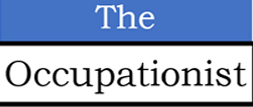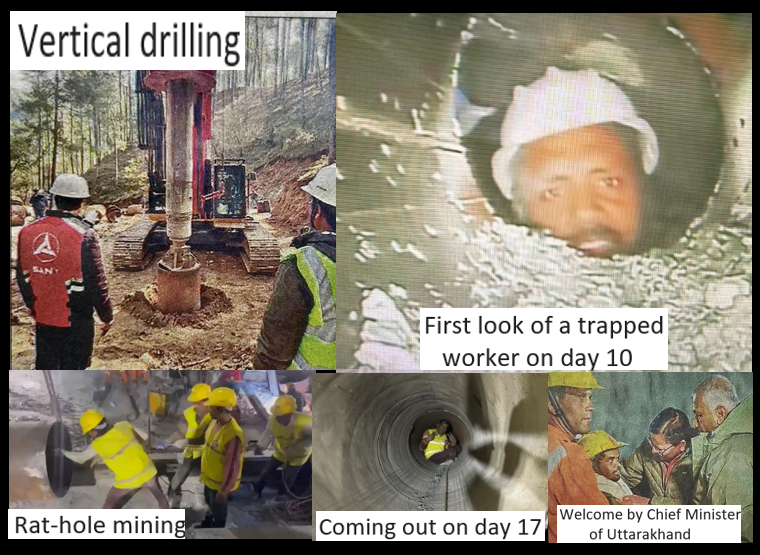On Sunday, 12th November 2023, at around 5.30 AM IST, a portion of the Silkyara Bend – Barkot tunnel, under construction, collapsed in the Uttarkashi district of the state of Uttarakhand, India. 41 workers got trapped inside the tunnel.
On Tuesday, 28th November, after 17 days, all the 41 trapped workers were rescued. This was possible due to a constant vigil being kept on the efforts by various agencies. It was a victory for India’s disaster management expertise.
As soon as the news of the workers trapped in a tunnel was out, highest level rescue operations under the title Operation Zindagi was immediately launched by Government of India, which was led by the National Disaster Response Force (NDRF), the State Disaster Response Force (SDRF), and the police.
What looked like an occupational safety (OS) issue initially, overlapped an became an occupational health (OH) issue as well because of the delay in getting the workers out due to operational reasons. If the rescue would have been completed in a day or two, it would have been a safety issue alone, and perhaps not much of an OH issue.
Accidents happen despite the best of precautions taken. In an accident, either the people involved die, get maimed or develop severe PTSD (post trauma stress disorder).
In this Silkyara tunnel collapse, the 41 workers have been in artificial light supplied from outside, food, medicines and oxygen are being sent via a duct, and doctors and others senior government officials have come to the site and are talking to them on a daily basis.
However, there are other issues, like the hygiene issues especially due to lack of ablution facilities, water to take bath etc. Luckily, it was not a small confined space that they were trapped but a 2-kilometer stretch.
There are many health issues that people who are trapped in dark closed spaces face:
- Respiratory infections, from mild to serious ones like pneumonia and tuberculosis
- Depression and psychosis due to fear of imminent death
- Behavioural changes due to absence of light
- Circadian rhythm which helps the body operate a healthy sleep-wake schedule may get affected leading to lack of energy, memory issues, problems with digestion and bowels
- PTSD (post trauma stress disorder) may be seen once they are rescued out
- Their pre-existing medical conditions can aggravate
What should have been done until they were rescued out:
- Get soft-spoken, mature and articulate doctors which should include Internists, Psychiatrists and Occupational Health physicians to talk to them, in addition to the local government doctors who have done a marvelous job
- Get popular sportspersons and film stars to interact with them, rather than India’s Principal Secretary. This is because the worker doesn’t know who or what a Principal Secretary is
- If the majority of workers are from a particular region, get popular persons from those geographies as they will relate will them and feel good and encouraged
- Provide guided meditation to the trapped workers
What should be done once the workers are out:
- Talk encouraging words
- Do not overwhelm them by showing opulence
- Provide nutritious food for a few days to build up the lost body mass. This should be done in a government accommodation which has a spacious garden as it is good for mental health
- Relocate their families to stay with them for a few days
- Get physical examination as well as psychiatric evaluation
- Treat the PTSD (post-traumatic stress disorder), if any
- Provide paid leave for a few days to be with their families and some cash incentive
The members of the various rescue teams, especially the rat-hole miners, should also be appropriately taken care of by the government authorities and their work-related and other concerns addressed.
This is also the time government should consider to improve the working conditions of all workers proactively as they are an asset to any country and be aware that India has an expertise of around 3000 medical professionals who specialize in Occupational (work-related) Health and can assist the government formulate a plan to protect worker health across all industries.
The photographs of most of the workers once they were out were of joy, obviously. This demonstrates the natural resilience the Indian worker has; and I hope it will remain, so that they don’t get into PTSD.
How many of these 41 workers will rejoin or do similar jobs will depend on how they are handled by the government authorities after they are rescued.
The Silkyara tunnel collapse reminds me of the Than Luang cave rescue in northern Thailand in June-July 2018. Twelve members of a junior football team aged 11 to 16, and their 25-year-old assistant coach got trapped in the cave on 23 June where they went after a practice session due to heavy rains that began soon after they entered.
On 2 July, British divers John Volanthen and Rick Stanton advanced through the narrow passages and muddy waters and found the group alive on an elevated rock about 4 kilometres (2.5 mi) from the mouth of the cave. Between 8 and 10 July, all 12 boys and their coach were rescued from the cave by an international team.
The coach had previously been a Buddhist monk, and had guided meditation for the children during the 18-day ordeal.
The rescue effort involved as many as 10,000 people, including more than 100 divers, scores of rescue workers, representatives from about 100 governmental agencies, 900 police officers, and 2,000 soldiers. Ten police helicopters, seven ambulances, more than 700 diving cylinders, and the pumping of more than one billion litres of water from the caves were required.
Highlighted below is how Elon Musk, a businessman got involved in a similar crisis in 2018:
On 3 July 2018, a user on Twitter asked if Elon Musk could “assist in anyway to get the 12 Thailand boys and their coach out of the cave”.The following day, Elon replied “I suspect that the Thai govt has this under control, but I’m happy to help if there is a way to do so”. By 6 July, Elon commented that engineers for SpaceX and Boring Company would reach Thailand to see if they could assist the government in the rescue.
On 7 July, based on the feedback received from the cave experts in Thailand, Elon Musk, by the same evening, announced that construction on the submarine (light enough to be carried by two divers and small enough to fit through the narrow gaps) was complete and that it was on its way to Thailand.
On 8 July, Elon shared a video of the submarine being tested in a pool through a simulated narrow passage. By 9 July, Elon commented that the “mini-sub” was ready if needed and that it would be left in Thailand if they need it for the rescue or in the future.
By 10 July, all 12 boys and their coach were successfully rescued and the submarine was never used in the rescue but was left in Thailand for later use, if any.
The Elon Musk involvement demonstrates that we must escalate difficult issues to the highest possible expertise available on Earth and find solutions because every life is precious!
At the same time, never forget what Elbert Hubbard said, ‘One machine can do the work of fifty ordinary men. No machine can do the work of on extraordinary man’. The rat-hole miners were extraordinary!
To know more, contact
___________________________________________________________________________________________
Dr Ajay Sati is an Occupational Health physician who prefers to describe himself as an Occupationist, to denote, ‘an expert in diseases and other concerns of occupations.’ Dr Sati has managed health and wellness programs in industries he worked, like the atomic energy, and energy (oil & gas) in India and overseas. An experienced virtual consultation expert he was involved in many greenfield and brownfield projects providing inputs from health point of view.



